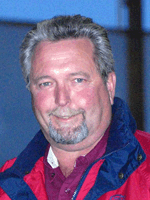
Regional Calf Report: Central Wisconsin – Doug Olsen
 By Doug Olsen, Vita Plus dairy territory manager
By Doug Olsen, Vita Plus dairy territory manager
Here in central Wisconsin, I’m seeing a lot of dairies investing in new calf facilities. Many in the area are building barns with individual pens and some are transitioning to automatic calf feeding systems with group pens. It seems most of these autofeeder systems are going on farms with 1,000 cows or more as a means to reduce labor needs.
This drive for better facilities comes as producers are putting increased value on raising healthy calves. Newer facilities allow them to spend more time with the animals and have a better handle on their performance. Farms are maximizing their efforts to raise the best replacements possible.
Everyone has been experiencing a challenging spring with fluctuating cold temperatures and a lot of moisture. Despite that, calf raisers are doing an excellent job of managing their calf programs and I’m not seeing a lot of respiratory or other health issues.
In a lot of ways, we’re still treating our calf programs like we’re in the middle of winter. Many of the producers I work with increased the amount of milk replacer powder they are feeding to boost energy during the winter months. We haven’t stopped that and we’ll continue to feed increased energy until we have consistently warm temperatures. The same goes for calf jackets; we’ll continue to put the jackets on the young calves as long as we maintain this cold weather.
That said, we still have to prepare for summer and that means thinking through fly control. We’re already talking about adding a larvicide to milk replacers and/or calf starters. Even though it’s hard to think about flies right now, we know that controlling these pests is one of the biggest challenges during the summer. If we start our fly control efforts now, we can work ahead to have a better handle on the issue throughout the summer.
Finally, as we look to summer, it’s also a good time to look at water feedings. As the temperature rises, we need to make sure we’re feeding water at least twice a day. On hot days, we might have to do it more often. It’s really important to keep those calves hydrated as it promotes both their health and their performance through increased starter intake.
| Category: |
Calf and heifer nutrition Starting Strong - Calf Care |

